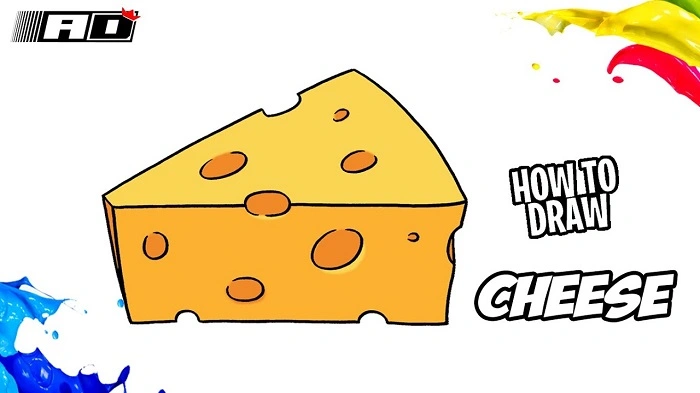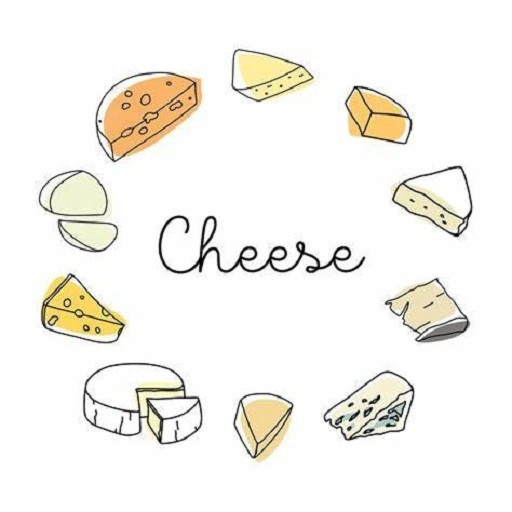Cheese curls are a classic snack known for their puffy, crunchy texture and bright, cheesy flavor. Drawing cheese curls offers an exciting opportunity to capture their light, airy appearance and vibrant orange color. Whether you’re illustrating them for a fun food blog, packaging design, or just for a creative exercise, this guide will help you depict the iconic shape and texture of cheese curls with attention to detail and fun elements.
Table of Contents
Why Would You Want to Draw Cheese Curls?
Capture the Puffiness and Shape
Cheese curls are known for their airy, curved, and twisted shape. Drawing these snacks gives you a chance to explore how to create light, curved lines and depict the airy, puffy texture that makes them instantly recognizable.
Explore the Bright, Cheesy Color
The vivid orange color of cheese curls makes them visually striking. This drawing allows you to experiment with color gradients, highlighting the cheesy coating and the snack’s enticing texture.
Add Playful Elements
Cheese curls are often associated with fun, casual snacking. You can enhance your drawing by adding playful or humorous details, like a character enjoying the snack or cheese curls spilling out of a bag, to make your drawing more dynamic and engaging.
Best Tips for Drawing Cheese Curls

Start with the Basic Shape of the Cheese Curls
Cheese curls have a distinct shape—often twisted or curled. To begin your drawing, focus on the basic form of the curls, keeping them soft, curved, and irregular to capture their light, airy texture.
How to Do It:
- Draw elongated, wavy lines that loop or curve back on themselves to create the iconic cheese curl shape.
- Make sure the curls vary in size and direction, reflecting the random nature of the snack.
- Keep the lines fluid and loose to convey the puffiness of the cheese curls.
Add Texture and Detail to the Curls
Cheese curls have a unique texture with a light, airy exterior and a slightly rough surface from the cheese coating. Adding texture to the curls will make them appear more realistic and interesting.
How to Do It:
- Use light, dotted lines along the surface of the curls to represent the cheesy coating.
- For larger curls, add subtle shading to show their three-dimensional shape.
- Emphasize the curves and contours of the curls to create depth and highlight their puffed-up nature.
Focus on Shading and Highlights
Shading is crucial for giving your cheese curls depth and dimension, especially since they have a light, crisp texture. To make them appear more realistic, add some shading and highlights.
How to Do It:
- Add subtle shading along the edges of the curls where light wouldn’t directly hit.
- Use gradients to create depth, making the curls look rounded and puffed up.
- Apply soft highlights to the areas where light would naturally reflect, such as the top of the curls.
Illustrate the Cheese Coating
One of the most important features of cheese curls is their bright orange, cheesy coating. Capturing the right color and texture will make your drawing instantly recognizable.
How to Do It:
- Use a vibrant orange color to fill in the surface of the curls, giving them that signature cheesy look.
- Add slight variations in color to reflect how the cheese coating may be thicker in some areas and lighter in others.
- Use soft blending techniques to create a smooth texture on the cheese coating.
Add Contextual Elements
To make your drawing more dynamic and engaging, consider placing your cheese curls in a fun setting. Whether they’re spilling out of a snack bag or being eaten by a character, adding context brings your illustration to life.
How to Do It:
- Draw a bag of cheese curls with the curls spilling out onto a surface like a table or plate.
- Include a hand reaching for the cheese curls to show interaction and add motion to the scene.
- You can even add a bowl of cheese curls, with some curls piled high, to give the image more depth.
Use Color Thoughtfully
Color is key to making cheese curls stand out. The bright, bold orange color is one of their most defining features. Use color strategically to bring your drawing to life.
How to Do It:
- Use rich orange tones for the cheese coating, ensuring they are vibrant and eye-catching.
- Add lighter, creamier tones for the highlights to reflect the smooth, coated surface of the curls.
- For the background or plate, use neutral colors like light browns, grays, or soft whites to keep the focus on the curls.
Add Background or Contextual Elements
Including a background helps set the scene for your cheese curls and provides context. Whether you want to place them on a table or in a snack bag, the setting can enhance the overall feel of the drawing.
How to Do It:
- Draw a simple table or kitchen counter to place the cheese curls on.
- Add a fun element like a soda can, a napkin, or even other snacks around the curls to complete the scene.
- Use a soft, neutral background so that the cheese curls remain the focal point of your drawing.
Different Styles for Drawing Cheese Curls


Realistic Style: Detailed and Lifelike
How to Do It:
- Focus on capturing the texture of the cheese curls, using detailed shading to make them appear fluffy and airy.
- Use gradients and subtle color variations to show depth and dimension in the curls.
- Pay close attention to the surface texture and the cheesy coating to create a realistic effect.
Cartoon Style: Bold and Playful
How to Do It:
- Simplify the shape of the cheese curls, using exaggerated loops and curves.
- Use bright, bold colors and thick outlines to create a fun, playful vibe.
- Add animated details like a smiling face on a curl or cheese curls flying through the air to enhance the cartoonish effect.
Minimalist Style: Clean and Simple
How to Do It:
- Use simple shapes for the curls, focusing on the essential outlines without too much detail.
- Limit your color palette to a few shades, such as light orange and yellow, to keep it clean and modern.
- Focus on creating a sleek, contemporary version of cheese curls with minimal shading and texture.
How to Choose the Best Style for Your Drawing
For Detailed Projects or Realistic Illustrations
If you aim to showcase the texture and depth of cheese curls realistically, the realistic style works best. This is ideal for food blogs, product packaging, or detailed art projects.
For Fun or Casual Illustrations
For a lighthearted, playful look, the cartoon style is perfect. This style is ideal for social media posts, snack advertisements, or casual illustrations where humor and fun are key.
For Modern or Sleek Art
If you’re creating a modern or minimalistic piece, the minimalist style is best. This works well for digital posters, modern snack ads, or branding materials where simplicity is valued.
How to Store Your Cheese Curls Drawing
Use a Portfolio for Paper Drawings
Store your hand-drawn artwork in an acid-free portfolio to protect it from damage and keep it in good condition.
Frame It for Display
Frame your drawing for a polished, professional look, especially if you plan to display it in a kitchen or dining area.
Save Digitally for Future Use
For digital drawings, save your work in high resolution and back it up in cloud storage for easy access and long-term preservation.
Frequently Asked Questions (FAQs)
How do I make the cheese curls look puffy and light?
Use soft, curved lines and subtle shading to depict the airy texture of the curls. Avoid harsh shadows, and instead focus on soft gradients to maintain their lightness.
Can I draw cheese curls in a cartoon style?
Absolutely! A cartoon style works great for cheese curls. Exaggerate their shape and add fun details like a smile or personality to make the drawing more playful.
How do I show the cheese coating on the curls?
Use a bright orange color and soft shading to represent the cheesy coating. Add slight variations in color to show texture and depth, highlighting areas where the coating might be thicker.
What should the background look like?
A simple kitchen counter, snack bowl, or even a bag spilling cheese curls will provide great context for the drawing. Keep the background subtle to maintain focus on the curls themselves.
How do I make my cheese curls look more dynamic?
Add movement to your drawing by illustrating cheese curls flying out of a bag, being eaten by a character, or in motion. This adds excitement and energy to the scene.

